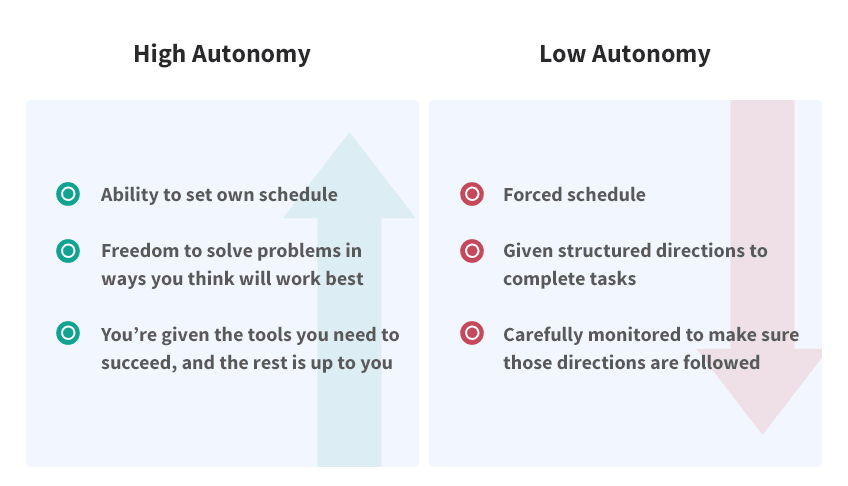Autonomy has its root in Greek, meaning “self-legislature” or “self-governance.” And in the simplest sense, that’s what it is. Autonomy is all about a person’s ability to make their own choices according to their values and interests.
In the workplace, that can look like a lot of different things. It could be employees with flexible hours who set their own schedules. It could be project leaders who choose what problems they want to tackle and when. It could be managers who, as Jack Welch put it, give their workers the tools they need to succeed, and then step out of their way and let them do awesome work.
High autonomy vs Low autonomy teams compared side-by-side
Imagine working as an engineer and being given a pain point to solve, but other than that, having total freedom. You can schedule your day how you’d like to, working during the hours you feel most productive. You can apply whatever problem-solving framework you love and design the solution you think is best.
And then you get to build it.
We probably just described a lot of developers’ perfect day.
Now imagine working as an engineer and being given a pain point to solve, but also a step-by-step directive about how to do it. You’re required to be in the office by 8 a.m. for a meeting about the problem where someone who doesn’t have your job tells you how to do your job, and then, as you’re trying to do it, a project manager is breathing down your neck to make sure you follow those directions exactly.
Awful, right?
In the first scenario, you were given all kinds of autonomy, and in the nightmare scenario, you were given none. Starting to see what a difference autonomy can make in the workplace? And there are even more benefits than just that.




Top comments (0)